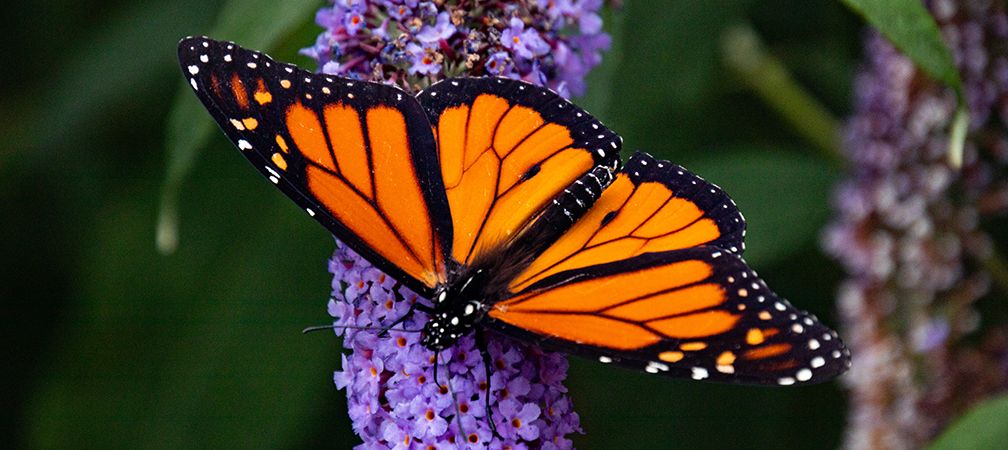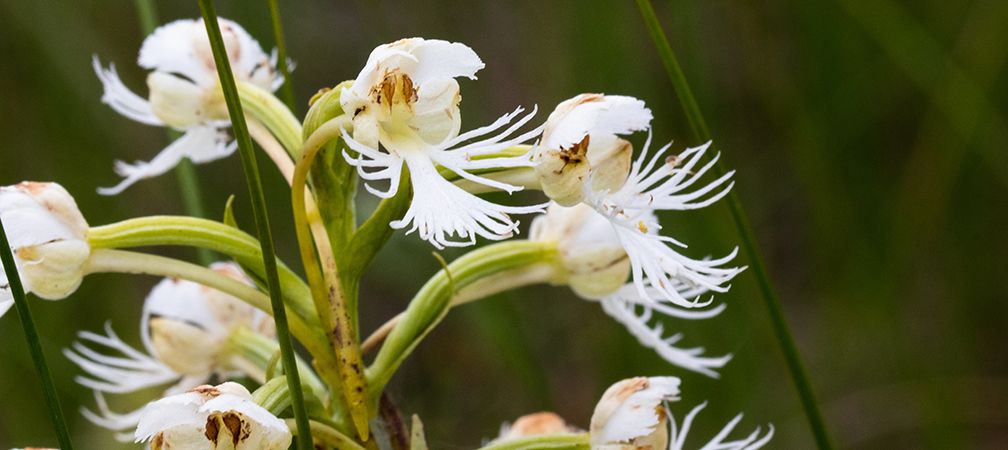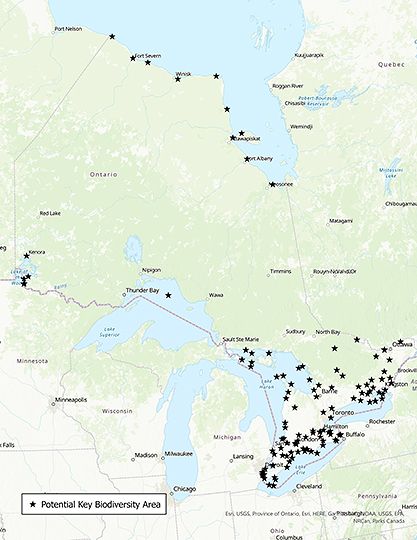Ontario Nature Blog
Receive email alerts about breaking conservation
and environmental news.
© Lora Denis
Matchedash Bay Provincial Wildlife Area © Anne Bell
Nature advocates in Ontario will soon have a new tool at their disposal: a conservation designation that pinpoints sites of exceptional value backed by scientific evidence. Known as Key Biodiversity Areas (KBAs), they are sites identified based on a global standard which considers the following characteristics:
KBAs build on previous efforts to identify important areas for nature, such as Important Bird and Biodiversity Areas. Championed by the Canadian KBA Coalition, the work currently involves many conservation organizations and other experts, including the Wildlife Conservation Society Canada which has been leading the scientific assessments for ecosystems and species other than birds, and Birds Canada, which is reassessing important Bird and Biodiversity Areas as KBAs.

KBA identification is now underway in Ontario. From the Hudson Bay coastline in the far north, to Dufresne Island in the west, to the Mississippi River in the east and Pelee Island in the south, dozens of sites are being assessed for their critical contributions to the persistence of biodiversity. Rich in wildlife, they represent a diversity of habitats that support rare and threatened plants and animals. For instance, the East Sydenham River candidate KBA is home to many at-risk (and memorably named) freshwater mussels, such as round pigtoe, rayed bean, threehorn wartyback, snuffbox, fawnsfoot and mapleleaf. (Ontario Nature’s Sydenham River Nature Reserve falls within this candidate KBA.)
The KBA designation can serve many purposes. For example, it will allow conservation priorities to be better communicated and justified, based on globally-recognized KBA criteria. It can then inform land use planning and decisions (e.g., natural heritage systems, municipal zoning, protected areas designations). It can also guide the work of land trusts (acquisition strategies, conservation easements) and other conservation organizations working on environmental policy reform. All in all, the KBA designation will support more strategic conservation planning and actions.

For example, as recommended in a joint submission endorsed by 62 organizations, KBAs should be an important consideration in ongoing discussions about Greenbelt expansion. Notable KBA candidates in the region include: Minesing Swamp, Matchedash Bay, Carden Alvar, Humber River, Wainfleet Bog and the Rice Lake Plains. Given that the Greater Golden Horseshoe is one of the most biodiverse and heavily developed areas in Canada, it is essential to recognize and protect these sites as part of a near-urban nature network.

There are many ways in which you can get involved with KBAs in Ontario. You can suggest or nominate sites for KBAs. You can contribute wildlife observations to community science projects like iNaturalist or eBird (these are directly used to help identify KBAs). There is also an opportunity of joining the Caretaker network (currently only for KBAs that are Important Bird and Biodiversity Areas). Finally, you can raise awareness about KBAs in your local community or organization.
For more information, reach out to the Wildlife Conservation Society Canada at craudsepp@wcs.org.

Gananoque Lake Nature Reserve © Smera Sukumar
Hi,
I am interested in seeing a list of the KBAs (and the main reasons for listing), especially for Ontario.
If you could provide a hyperlink to the KBA lists, it would be appreciated.
All the best,
Richard
Hi Nancie,
If you reach out to the Wildlife Conservation Society Canada at craudsepp@wcs.org, this may be a good way for you to obtain more information about the Saugeen Shores KBA candidacy-state.
With kind regards,
Noah
Good Day,
I am doing some work on development in Saugeen Shores (Port Elgin and Southampton) and see that the community is designated as a potential KBA.
Curious as to why this is a potential designation/
I am also hopeful that might have information on keystone and indicator species for the area, or can point me in the right direction.
Many thanks,
Nancie